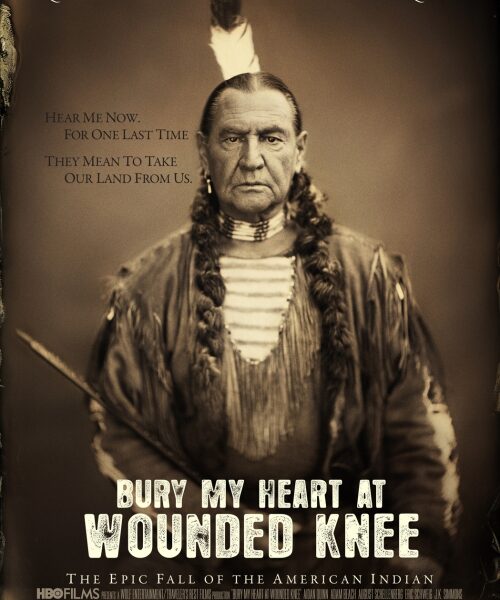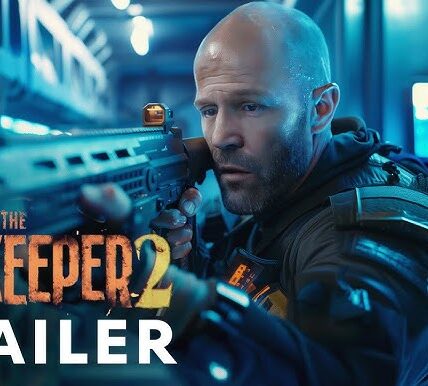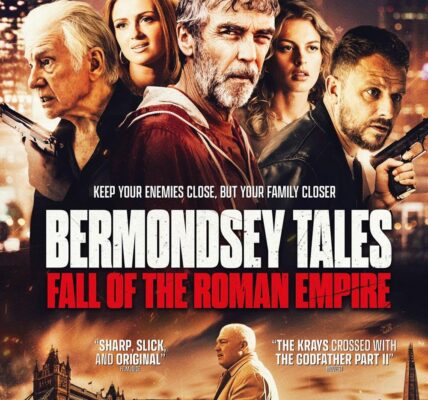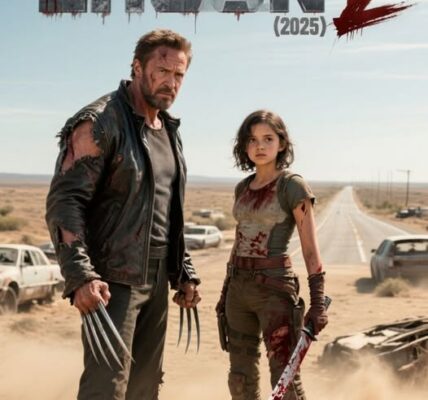Movie Overview
- Title: Bury My Heart at Wounded Knee (2007)
- Release Date: Premiered on HBO on May 27, 2007
- Genre: Western / Historical Drama / Biography
- Director: Yves Simoneau
- Main Cast:
• Aidan Quinn as Senator Henry L. Dawes
• Adam Beach as Charles Eastman (Ohiyesa)
• August Schellenberg as Sitting Bull
• Anna Paquin as Elaine Goodale
• Gordon Tootoosis as Red Cloud, and others including Wes Studi as Wovoka - Where to Watch: The film is known to be available on HBO / HBO Max in some regions.
1. Plot Summary
Bury My Heart at Wounded Knee dramatizes the historical struggle of the Lakota (Sioux) and other Native American tribes in the late 19th century, especially during the period between the Battle of Little Bighorn (1876) and the massacre at Wounded Knee (1890).
The narrative is seen through several interwoven perspectives:
- Charles Eastman (Ohiyesa): A young Sioux man educated among whites, who becomes a doctor and symbolizes a hope for adaptation and bridge between Native and settler worlds.
- Sitting Bull: The proud Lakota leader who resists U.S. government encroachment and the forced ceding of lands.
- Senator Henry L. Dawes: A politician whose policies, especially the Dawes Act, push for assimilation and individual land allotment, under the guise of “civilizing” Native Americans.
The film traces how treaties are broken, Native lands are invaded, policies of forced assimilation and relocation are enforced, and resistance arises. Ultimately it races toward the tragic, infamous Wounded Knee Massacre, where many Lakota men, women, and children are killed.
It explores the collision of two worlds — the Native world with its traditions, sacred lands, and spiritual values — and the expansionist American policies that viewed land as commodity, not sacred trust.
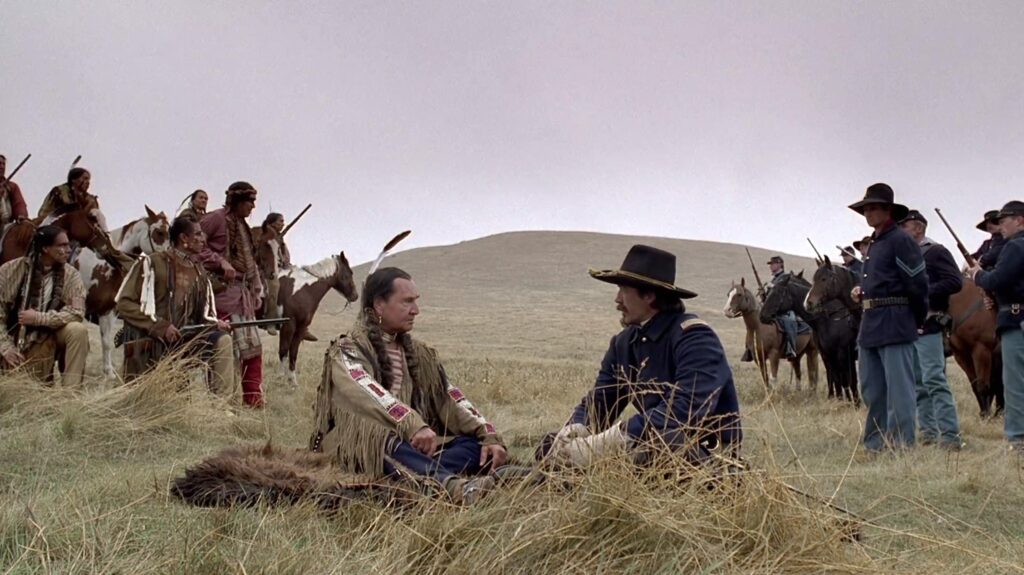
2. Notable Elements
What Stands Out (Strengths)
- Cinematic Style & Visuals: The film uses shifting visual tones—from vivid colors to sepia, dreamlike overlays, and ghostly black-and-white transitions—to evoke memory and mourning. New York Magazine praises this “dream-trance quality” in cinematography.
- Powerful Acting, Especially by Native Actors: August Schellenberg as Sitting Bull delivers moments of dignity, pain, and moral weight that feel deeply earned.
- Ambitious Ensemble Interplay: The film gives voice to multiple characters, from Eastman’s internal conflict to Dawes’s political idealism (and blind spots), to Red Cloud’s reluctant compromises, and to spiritual figures like Wovoka.
- Historical Gravitas & Emotional Punch: The portrayal of broken promises, treaties, forced relocation, disease, poverty, and massacre is unflinching, forcing the viewer to confront the moral horror of policies once thought “civilizing.”
Weaknesses / What Doesn’t Fully Land
- White Savior / Assimilation Tension: Some critiques (for example from I Review Westerns) note that the role of Eastman, a Native acting within Western institutions, edges toward a “bridge” or assimilation narrative which can, at times, feel like a default “hope through white institutions” trope.
- Emotional Distance in Some Threads: Because the film covers so much history and many figures, not every subplot or character gets deep emotional development. Some strands feel more like historical signposts than lived experience.
- Pacing & Ambitious Scope: At 132 minutes, the film has to compress decades of history, which means certain transitions feel abrupt or underexplored.
- Tone & Balance: At times the film shifts between documentary-style exposition (treaty hearings, Senate debates) vs intimate character moments. The transitions can feel jarring, and the political side sometimes overshadows emotional arcs.
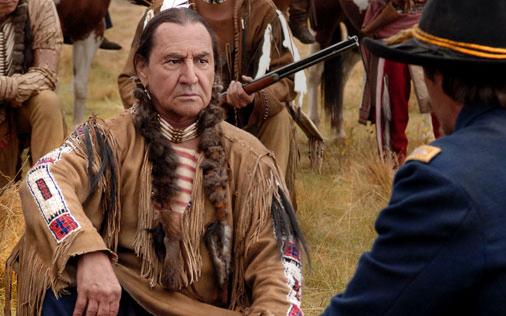
3. Themes & Messages
- Colonialism, Broken Promises & Injustice: The heart of the movie is the systemic betrayal of Indigenous peoples through treaties, laws, forced displacement, and violence. The film underscores that “manifest destiny” was carried out at enormous human cost.
- Identity vs Assimilation: Eastman’s journey embodies the tension of identity — whether one can straddle two worlds or must choose, and how assimilation often comes at spiritual and cultural expense.
- Resistance & Dignity: Figures like Sitting Bull and Red Cloud resist, often with pain and sacrifice, valuing land, honor, and memory over capitulation.
- Spirituality & Land as Sacred: The land is not just property but sacred soil. The clash over land is a clash over worldview — for many Native Americans, the land is part of identity, belonging, cosmology; for many Western powers, land is commodity.
- Legacy, Memory & Mourning: The film mourns a culture under siege, the loss of traditions, and demands that the memory of injustice not be buried.
While not a holiday or celebratory film, many of its themes — remembrance, reconciliation, respect for the oppressed, moral reckoning — resonate in seasons of reflection, commemorations, or reconciliation.
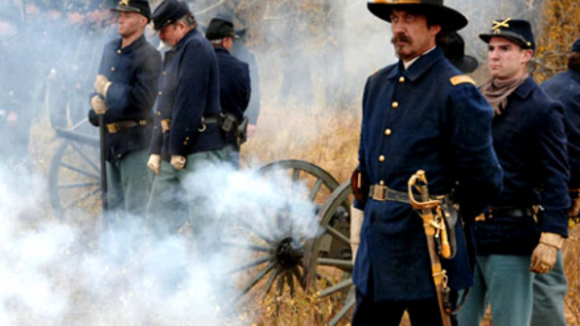
4. Personal Impressions
What I Admired
- The film is brave. It doesn’t soften the cruelty of historical oppression. It sears the viewer’s conscience by layering policy debates, broken treaties, and real human suffering with faces and voices, not just data.
- The visual storytelling (color shifts, transitions) is elegant and haunting. It reinforces that this is not just history but memory.
- Performances by Schellenberg and Beach (Eastman) and the ensemble lend weight and credibility to what might otherwise risk feeling didactic.
- The ambition — to tell a sweeping narrative, to center multiple Native voices — is admirable. Even if imperfect, the attempt matters.
What I Felt Less Successful
- At times the narrative leans too much on exposition. In scenes with politics or treaty hearings, the film shifts from the visceral to the rhetorical, momentarily losing emotional momentum.
- Because many threads are interwoven, some characters (especially female roles or secondary chiefs) get less development, which limits emotional depth in their arcs.
- The pacing suffers in parts: transitions between timelines or ideological debates sometimes slow the film’s forward momentum.
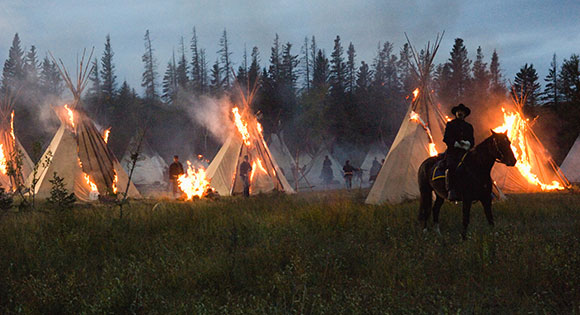
5. Audience Recommendations
This film is recommended especially for:
- Viewers interested in Indigenous history, U.S. expansion, and untold stories of American history.
- Audiences who appreciate historical dramas that attempt nuance and complexity, even if imperfect.
- Those who accept films as moral reckonings rather than simple entertainment — the film asks you to think, feel, and remember.
- Students, educators, or viewers who want a dramatic introduction to the later chapters of Native American history in the 19th century.
Might be less suited for:
- Audiences who prefer lighter fare or escapism — this is heavy, often tragic, emotionally taxing.
- Those wanting strictly personal character drama over sweeping historical scope — some arcs are more symbolic than deeply personal.
- Viewers who dislike frequent shifts between political exposition and character focus.
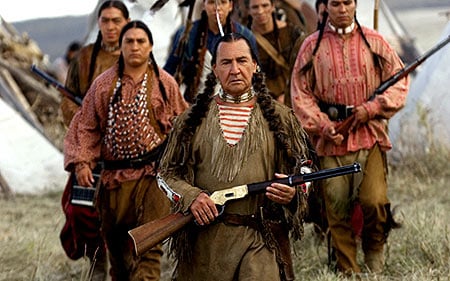
6. Conclusion & Rating
Bury My Heart at Wounded Knee is not flawless, but it is a worthy and powerful attempt to dramatize a painful, often neglected chapter of American history. It pairs ambition with heart, though sometimes its scope overwhelms the emotional core. Its haunting imagery, strong performances, and moral urgency make it a significant work in the realm of historical dramas.
Final Recommendation: Watch it, especially if you want film to confront history, memory, and injustice. Be prepared for solemnity, grief, and the weight of legacy.
Star Rating: ★★★★☆ (4 out of 5 stars)
